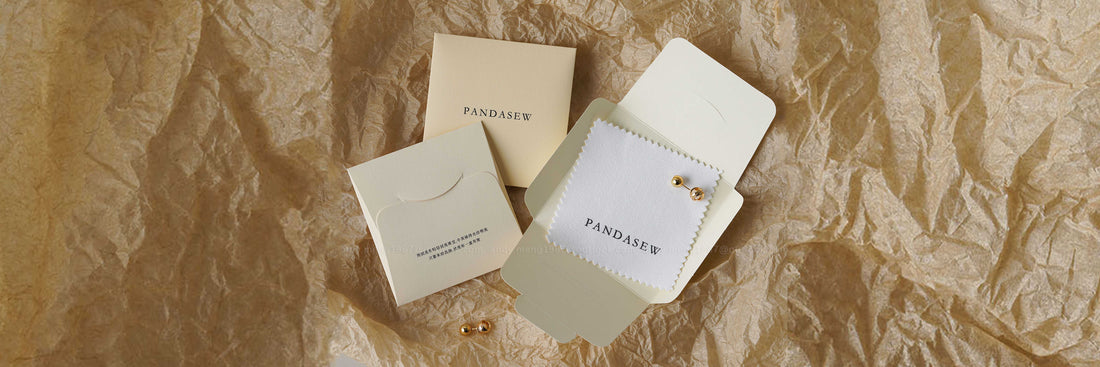
Jewelry Polishing Cloth customized: A Comprehensive Guide
Jewelry is more than just an accessory; it’s an expression of style, a keepsake of memories, and sometimes, a family heirloom passed down through generations. To keep these precious items looking their best, regular maintenance is essential. One of the most effective tools for this is a jewelry polishing cloth. In this comprehensive guide, we’ll explore how to use a jewelry polishing cloth to maintain and restore the brilliance of your treasured pieces.
1. What is a Jewelry Polishing Cloth?
A jewelry polishing cloth is a specialized fabric designed to clean and restore the shine to various types of jewelry, including gold, silver, and platinum. These cloths are treated with specific chemicals that effectively remove tarnish, dirt, and oils that accumulate on jewelry surfaces over time. Typically, they come in a two-layered form: the inner layer is impregnated with cleaning agents, while the outer layer is used for buffing and polishing.
Do Jewelry Polishing Cloths Work?
Yes, jewelry polishing cloths are highly effective. They are engineered to safely clean and polish jewelry without causing any damage. The impregnated inner layer works to lift and remove tarnish, oxidation, and dirt, while the outer layer provides a final polish, bringing out the natural luster of the jewelry. These cloths are particularly convenient because they do not require additional cleaning solutions or water, making them ideal for on-the-go maintenance.
2. Why Use a Jewelry Polishing Cloth?
Using a jewelry polishing cloth offers several benefits:
- Non-abrasive Cleaning: The cloth is gentle on delicate surfaces.
- Convenience: It’s easy to use at home without needing professional cleaning services.
- Cost-effective: Reduces the need for expensive cleaning solutions and professional services.
- Preservation: Helps maintain the integrity of the metal and gemstones over time.
3. Step-by-Step Guide to Using a Jewelry Polishing Cloth
Step 1. Prepare Your Workspace
- Choose a Clean Area: Ensure your workspace is clean and free from dirt and dust that could scratch your jewelry.
- Gather Your Supplies: You’ll need your jewelry polishing cloth and the items you want to clean.
Step 2. Inspect Your Jewelry
- Check for Loose Stones: Before polishing, examine your jewelry for loose stones or parts. If you find any, avoid polishing that area and take the piece to a professional jeweler.
- Identify Areas of Tarnish: Take note of areas that need the most attention.
Step 3. Using the Inner Cloth for Polishing
- Hold the Cloth: Hold the inner layer of the polishing cloth between your thumb and forefinger.
- Gently Rub the Jewelry: With light to moderate pressure, rub the jewelry. Focus on tarnished areas, moving in a back-and-forth or circular motion.
- Avoid Excessive Force: Be gentle to avoid scratching or damaging the jewelry, especially on softer metals and delicate gemstones.
Step 4. Using the Outer Cloth for Buffing
- Buff the Jewelry: Use the outer layer to buff the jewelry. This step removes any residue left from the polishing and adds an extra layer of shine.
- Inspect the Shine: Check the jewelry under good lighting to ensure all tarnish is removed and the piece is shining.
Step 5. Clean the Cloth
- Keep It Clean: Store your polishing cloth in a clean, dry place. Some cloths can be reused multiple times, but once it becomes too dirty or loses its effectiveness, it’s time to replace it.
4. Tips for Different Types of Jewelry
Gold and Platinum
These metals can be polished more vigorously as they are relatively hard. The polishing cloth will help remove minor scratches and restore luster.
Silver
Silver tarnishes more quickly and might require more frequent polishing. Use the cloth regularly to maintain its shine.
Gemstones
Be cautious around gemstones. While the cloth can polish the metal setting, avoid direct contact with the stones unless the cloth is specifically designed for them.
Pearls
Pearls are delicate and should not be polished with standard cloths. Use a special cloth or consult with a jeweler for pearl care.
Common Mistakes to Avoid
- Using Too Much Pressure: This can scratch the metal or damage delicate settings.
- Ignoring Manufacturer Instructions: Always follow the care instructions specific to your jewelry and polishing cloth.
- Polishing Over Loose Stones: This can cause further damage and potentially lose the stone.
5. Why Do Jewelry Cleaning Cloths Turn Black?
Jewelry cleaning cloths turn black because they absorb the tarnish, dirt, and oils from the jewelry during the cleaning process.
- Absorption of Contaminants: When you rub your jewelry with a polishing cloth, the fabric picks up various contaminants such as tarnish, dirt, body oils, and cosmetic residues. These substances accumulate on the cloth, leading to visible discoloration.
- Chemical Reaction: Most jewelry polishing cloths are treated with specific chemicals designed to break down and lift tarnish from metal surfaces. Tarnish is a result of oxidation, where metals like silver and copper react with sulfur-containing compounds in the air to form a dark layer. When the treated cloth comes into contact with tarnish, a chemical reaction occurs that transfers the tarnish from the jewelry onto the cloth. This reaction is what causes the cloth to turn black.
- Indication of Effectiveness: The blackening of a jewelry cleaning cloth is a clear indicator that the cloth is effectively doing its job. The more tarnish and dirt it removes, the darker it becomes. This visual feedback helps users understand that the cloth is working as intended.
- Retention of Cleaning Properties: Despite turning black, a jewelry polishing cloth remains effective for multiple uses. The cloth’s cleaning agents continue to react with tarnish and dirt even after the fabric has darkened. It’s important to note that the blackened areas can still be used to clean jewelry, as the chemical agents are still active.
Optimal Usage Tips:
- Rotate the Cloth: To maximize the lifespan of your polishing cloth, rotate it during use to ensure you’re utilizing different areas of the fabric. This prevents one section from becoming overly saturated with contaminants.
- Handling: Use the cloth with clean hands to avoid transferring oils and dirt from your fingers onto the cloth. This minimizes the amount of grime the cloth needs to absorb, helping it stay effective longer.
- Storage: Store the cloth in a sealed bag or container when not in use. This prevents it from drying out and protects it from dust, dirt, and other contaminants. Airtight storage also helps maintain the integrity of the cleaning agents.
- When to Replace the Cloth: Over time, a jewelry cleaning cloth will reach a point where it becomes too saturated with tarnish and dirt to be effective. If you notice that your cloth is no longer cleaning as well as it used to, or if it feels stiff and less pliable, it’s time to replace it. High-quality polishing cloths are an affordable investment to ensure your jewelry maintains its shine and beauty.
6. Can Jewelry Polishing Cloths Be Washed?
Jewelry polishing cloths are specifically designed with embedded cleaning agents and compounds that make them highly effective in maintaining the shine and luster of your jewelry. Washing these cloths can significantly diminish their effectiveness for several reasons:
- Loss of Impregnated Cleaning Agents: The primary reason jewelry polishing cloths should not be washed is that they are treated with specialized cleaning and polishing agents. These agents are impregnated into the fabric during the manufacturing process. Washing the cloth with water and detergent will strip away these chemicals, rendering the cloth ineffective for its intended purpose.
- Disruption of Fabric Structure: Polishing cloths are crafted to have a certain texture and structure that aids in the cleaning process. Washing can alter the fabric’s weave and texture, reducing its ability to effectively clean and polish jewelry. The gentle abrasiveness that helps remove tarnish may be compromised.
- Contamination with Residues: Laundry detergents, fabric softeners, and other washing agents can leave residues on the cloth. These residues can transfer to your jewelry during cleaning, potentially causing harm or leaving unwanted films on the surface of your precious pieces.
Conclusion
A jewelry polishing cloth is an essential tool for keeping your jewelry looking its best. By following the steps outlined in this guide, you can ensure your pieces remain radiant and well-maintained. Regular use of a polishing cloth not only enhances the beauty of your jewelry but also prolongs its lifespan, allowing you to enjoy your treasured items for years to come.
